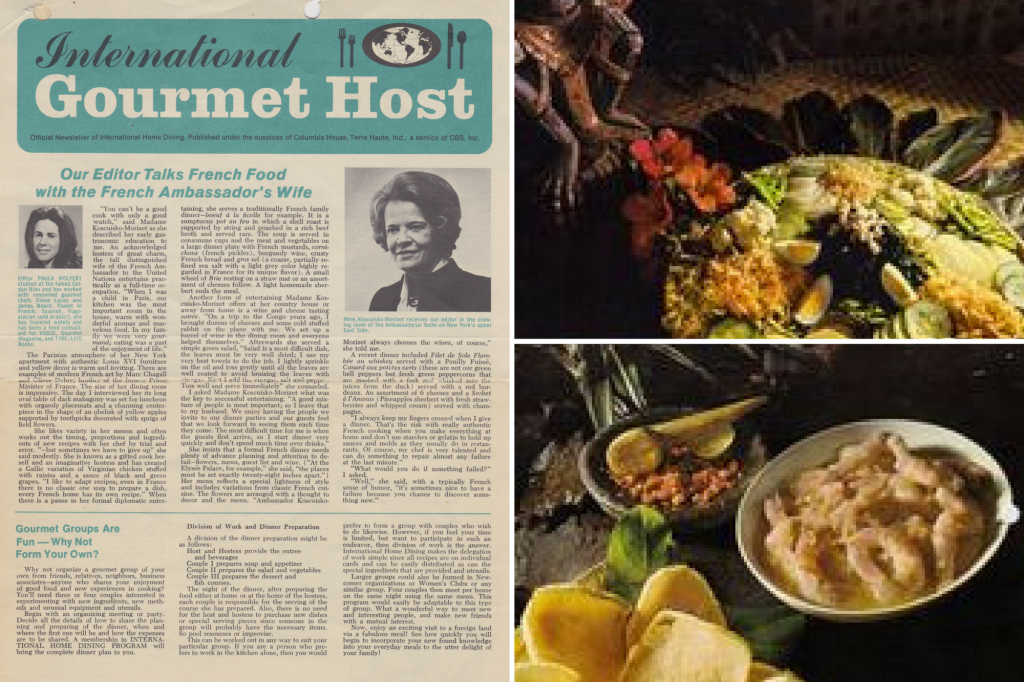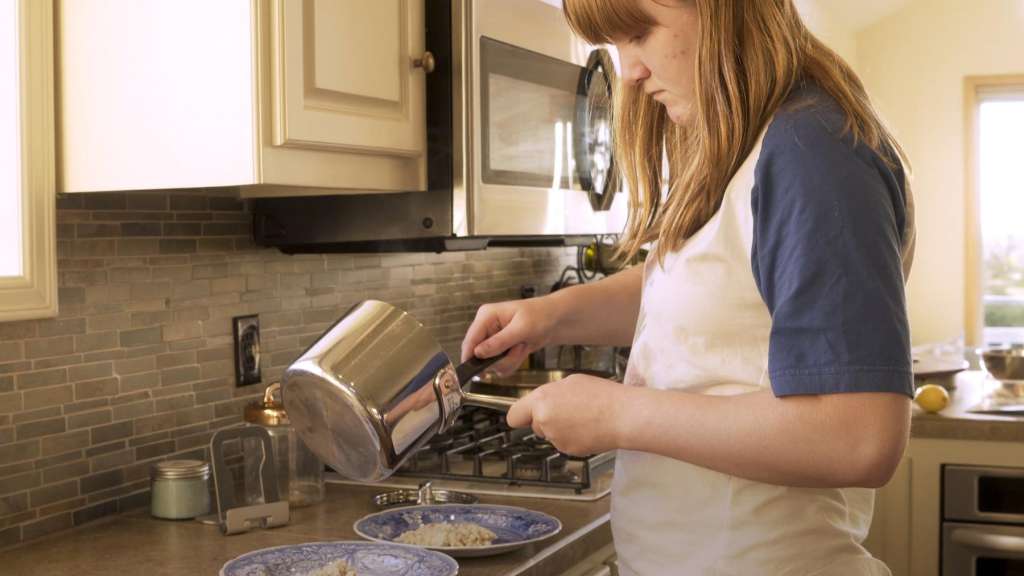Paula Wolfert’s Party Boxes

Meal kits like Sunbasket may seem like a recent innovation, but in these, as in so many things, the cookbook author Paula Wolfert was way ahead of the curve. More than 50 years ago, Paula collaborated with Columbia House, a subsidiary of Columbia Records, to launch an entertaining kit called International Home Dining. In this excerpt from Unforgettable, a biography of Paula, we explore how the service did—and did not—resemble today’s meal kit experience.
A kind of Sunbasket of its day, Paula’s “International Home Dining” service sent subscribers a box containing everything they’d need to throw a dinner party from a different country: an album of music from that country (of course), plus a half-dozen illustrated recipes, printed invitations, a four-page newsletter, a battle plan for the cooking, and a half-dozen harder-to-find ingredients and necessary equipment (think a basic cleaver and wok). Each box cost $9.95 plus shipping and handling, about $80 in today’s currency.
Starting with a French dinner party box, Paula developed what would become part of her visionary cookbook-writing style: unapologetically complex recipes, engaging descriptions to capture their flavors in vivid detail, and mail-order sources to bypass the limited American supply chain, so subscribers could achieve those flavors at home.
Even for Paula, however, the recipes for her first French party box were—in a testament to her intense classic training—absurdly complicated. Especially the first course: truites à la gelée de Riesling. The preparation involved poaching six head-on trout in a made-from-scratch court bouillon, skinning them, setting each in homemade fish aspic, then garnishing them with “flowers” of lemon peel and tomatoes (or pimiento cherry peppers) that were dipped in aspic and applied with tweezers. The trout was served with freshly made sauce verte (green mayonnaise).
“I made it all the time for friends in Paris,” she explained.
To empower subscribers to explore new culinary ideas, Paula began her lifelong practice of sweetly, if wildly, understating the difficulty of her recipes. She communicated in the vernacular of the mainstream 1969 American home cook, who was accustomed to processed food. “The recipe is not difficult but the glazing and decorating do take time,” she wrote. “If it sounds difficult, think of it in terms of boiling a potato, making a bowl of Jell-O, and decorating the Jell-O with fruit.”
The second box reminded Paula that cooking could be an adventure. It focused on Chinese cuisine, which was considered very chic. Paula enlisted the cooking instructor Grace Zia Chu to help. Born in Shanghai, Chu was an early advocate for authentic regional Chinese cooking. She emboldened Paula to break down the sprawling cuisine with breathtaking efficiency. Their menu spanned the country: seven recipes from five regions, including a Beijing pork stir-fry with tiger lily buds and cloud ear mushrooms, Cantonese spare ribs with fermented black bean sauce, and cold poached Sichuan chicken topped with tingly Sichuan peppercorns. Imagine the 1970 cook opening the box to discover those recipes along with fermented bean sauce and cloud ear mushrooms, tiger lily buds, and Sichuan peppercorns.
But it wasn’t until the fifth box that Paula discovered her métier. Columbia House let her focus on a cuisine hardly anyone had heard of at that time: Indonesian. Paula tracked down a batik importer, Madame Soeharjo, who invited Paula to come to an Indonesian community center in Elmhurst, Queens, to watch the preparation of slametan, a Javanese wedding feast.
There, Paula found a dozen Javanese women sitting on the floor grinding spice pastes called bumbus on stone mortars (cobeks) with right-angled pestles. The room was filled with the powerful scents of herbs and spices: tamarind, shrimp paste, lemongrass, kaffir (makrut) lime leaves. She was seized by a deep curiosity but didn’t stand in a corner with a notepad observing. Instead, she got down on the floor and persuaded someone to show her how to use a cobek to make some of the bumbus herself.
“I was interested in doing it the way they do it so I could feel it, so I could understand it!” Paula said. “I wanted to breathe in what they were doing.”
Determined to help subscribers achieve these flavors at home, Paula suggested they grow their own cilantro (coriander) and harvest the seeds, both then nonexistent in American supermarkets. “Coriander seeds are pungent and aromatic,” she wrote. “When they are ground, they release a sweet aroma, and their oil provides one of the two flavorings used in the production of gin! You can plant the seeds for they grow very easily into the leaf herb called Chinese parsley, or cilantro, which is wonderful in soups, salads and stews.”
Paula included recipes for a lemongrass beef satay and a rich peanut sauce. She also slipped in a step-by-step method for making coconut milk and from-scratch directions for ketjap manis (sweet soy sauce) and sambal oelek (chile paste). With importing help from Bosboom and Madame Soeharjo, she was able to send subscribers fresh kaffir (makrut) lime leaves, lemongrass stalks, and daun salam leaves, a bay-like herb with a bitter-almond flavor that’s still rare in the United States today.









